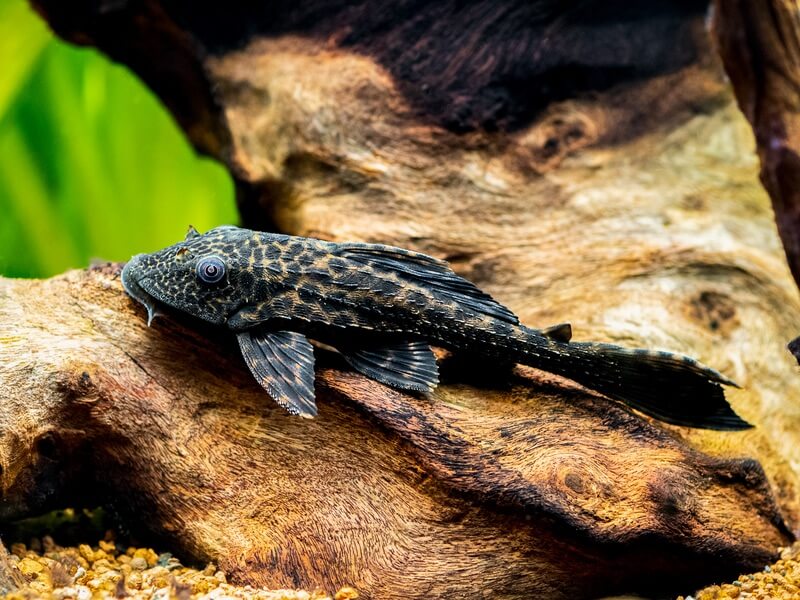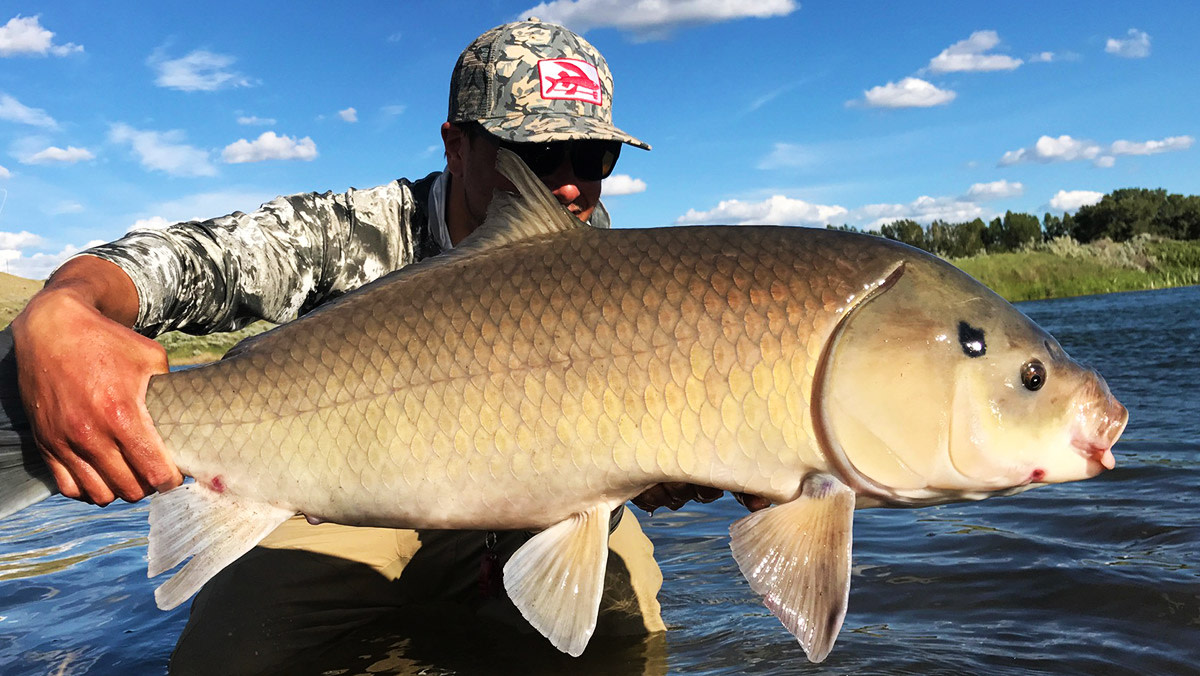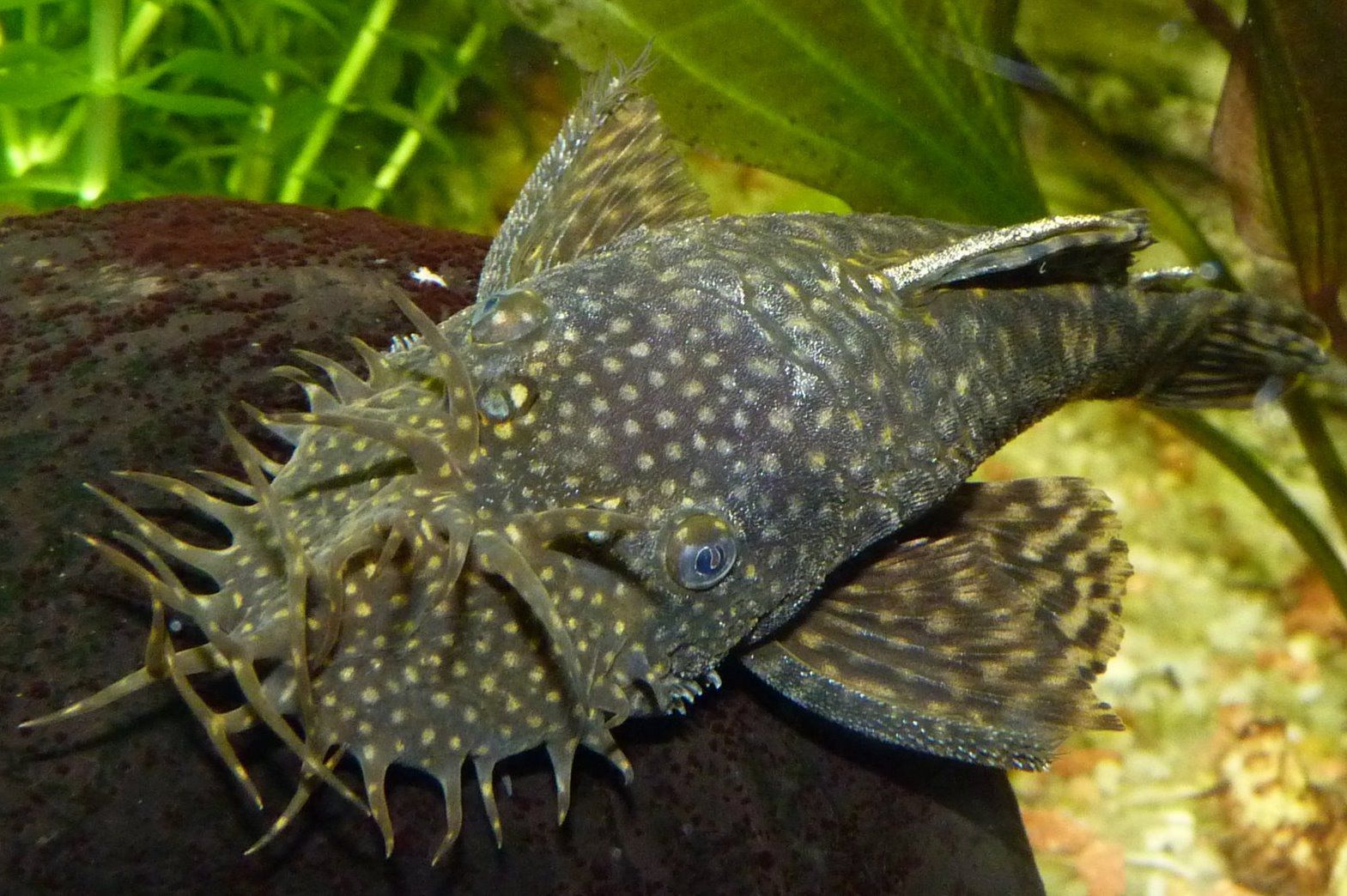Sucker fish are a diverse group of freshwater fish that are known for their specialized ventral mouth, which they use to feed and attach themselves to the ground and structure around them. They come in many different colors, shapes, and sizes, from the tiny otocinclus catfish to the bigmouth buffalo, which can reach a maximum of 79 pounds.
In this article, we will cover ten different types of sucker fish ranked by size, so you can choose the best species for your aquarium. We will also provide important information about each species, including their size, habitat, and diet.
You are reading: 10 Types Of Sucker Fish Ranked By Size
So, let’s dive right in and get started!

10 Types Of Sucker Fish Ranked By Size
Bigmouth Buffalo

The bigmouth buffalo (Ictiobus cyprinellus) is the largest North American species in the Catostomidae or “sucker” family. It is a freshwater fish that is native to North America and is vulnerable and in decline.
The bigmouth buffalo is one of the longest-lived and latest-maturing freshwater fishes, capable of living 127 years and reproducing infrequently. It is typically a brownish olive color with dusky fins, but can vary greatly in color across individuals including melanistic, golden, and even xanthic color morphs.
The bigmouth buffalo has a long dorsal fin, but unlike all other extant species, it has a terminal (forward-facing) mouth reflecting its unique, pelagic feeding ecology. It is the largest of the buffalofishes and can reach a length of more than 4 ft (1.2 m) and 80 lb (36 kg) in weight.
The bigmouth buffalo can be found in rivers, lakes, and channels throughout North America. Its diet consists of small fish, plants, and small invertebrates.
Common Plecostomus
The common plecostomus, also known as the pleco, is a freshwater fish that belongs to the Loricariidae family of armored catfish. It is a popular fish in the aquarium community due to its hardiness, ease of care, and interesting appearance.
The average size of a fully grown common pleco in captivity is around 15 inches in length, but they can grow up to 24 inches in the wild. However, some specimens living in massive environments can reach similar lengths in captivity, although this is pretty rare.
The pleco has a distinctive sucker mouth on the bottom of its head, which it uses to attach itself to surfaces and feed on algae and other food sources. Common plecos are nocturnal, so they have small beady eyes equipped with tissue that regulates the amount of light getting in.
Proper common pleco care isn’t a huge challenge, but they do have specific aquarium requirements that must be met. The recommended tank size for a common pleco is 30 gallons, but fully grown common plecos would require a minimum of 75-80 gallons tank.
Sailfin Plecostomus
The sailfin plecostomus (Pterygoplichthys gibbiceps) is a freshwater fish that belongs to the Loricariidae family of armored catfish. It is native to Brazil, Ecuador, Peru, and Venezuela, where it is found in the Orinoco and Amazon basins.
The sailfin pleco is a large fish that can grow up to 20 inches in length, with some specimens reaching up to 24 inches. They have a distinctive sail-like dorsal fin that runs the length of their body, which they use to help them swim and navigate through the water.
The sailfin pleco is primarily herbivorous, but will also eat dead animals. They are known for their ability to clean algae from aquariums, making them a popular choice for aquarium enthusiasts.
Proper sailfin pleco care requires a tank size of at least 75 gallons, with a pH range of 6.5-7.5 and a temperature range of 72-82°F. They also require a varied diet that includes algae wafers, fresh vegetables, and occasional meaty foods.
The sailfin pleco is a hardy fish that can live for more than 20 years with proper care.
Bristlenose Pleco

The Bristlenose Pleco, also known as the Bushy Nose Pleco or Bristlenose Catfish, is a freshwater fish that belongs to the Loricariidae family of armored catfish. It is one of the smallest catfish, growing to only 5 inches in length.
The Bristlenose Pleco is brown, green, or gray with white or yellow spots, and some have uneven coloring, with lighter and darker splotches on various parts of their bodies.
Both males and females have fleshy tentacles around the snout, thus earning the name bristlenose, but males have more developed cheek odontodes.
Bristlenose Plecos are herbivores, eating mainly algae, so feeding algae or spirulina wafers once or twice daily is best. Granules, flakes, or bloodworms are also good, while the occasional zucchini slices and blanched romaine lettuce or spinach are good treats.
This species is relatively easy to breed, and it’s quite easy, as well, to determine gender. The Bristlenose Pleco is a popular fish in the aquarium community due to its hardiness, ease of care, and interesting appearance.
Zebra Pleco
The Zebra Pleco (Hypancistrus zebra) is a small freshwater fish that belongs to the Loricariidae family of armored catfish. It is native to a small section of the Rio Xingu in Brazil, occurring in the big bend area of the river, downstream from the town of Altamira, Para.
The Zebra Pleco gets its name from its black and white stripes, resembling the coloration of a zebra. This species grows to a length of 6.4 centimeters (2.5 inches) SL. The Zebra Pleco is a carnivore, and it is more of a carnivore than an algae eater.
This species is highly sought after by aquarists due to its unique appearance and rarity. The Zebra Pleco is listed in Appendix II of the Convention on International Trade in Endangered Species (CITES), meaning that international trade (including in captive-bred specimens) is regulated by the CITES permitting system.
Proper Zebra Pleco care requires a tank size of at least 30 gallons, with a pH range of 6.0-7.5 and a temperature range of 78-86°F. They also require plenty of caves and hiding places in their aquarium.
Clown Pleco
The Clown Pleco (Panaqolus maccus) is a freshwater fish that belongs to the Loricariidae family of armored catfish. It is also known as the clown panaque, clown plecostomus, clown pleco, or ringlet pleco.
The Clown Pleco is a dwarf loricariid, and it is one of the smallest plecos, growing to only 3-4 inches in length. This species is native to Venezuela and Colombia.
The Clown Pleco is a peaceful and gentle-tempered fish that is known for its playful antics. It is a nocturnal fish that is most active at night. The Clown Pleco is named for its colorful patterns, which include a brown body with white spots and stripes.
Proper Clown Pleco care requires a tank size of at least 20 gallons, with a pH range of 6.5-7.5 and a temperature range of 72-82°F. They are omnivores, and their diet should consist of a variety of foods, including algae wafers, fresh vegetables, and occasional meaty foods.
Clown Plecos are relatively easy to care for and are a popular choice for aquarium enthusiasts due to their unique appearance and playful behavior.
Blue Sucker
The Blue Sucker (Cycleptus elongatus) is a long-lived freshwater fish species in the sucker family that is of conservation concern. Here are some key characteristics and information about the Blue Sucker:
Appearance:
– The Blue Sucker has a blue or bluish-black body with a white underside.
– It has a small, slender head that tapers to a fleshy snout.
– The dorsal fin contains 29-33 rays, and the anal fin contains 7-9 rays.
– The scales are large and contain 55-58 along the lateral line.
Size:
– The Blue Sucker has an average weight of 2-3 kilograms and an average length of 76 centimeters.
Habitat:
– The Blue Sucker is native to the United States and Mexico.
– In the U.S., it lives in the Mississippi River basin north to Minnesota and Wisconsin.
– The Blue Sucker also lives in the Missouri River drainage to North Dakota and South Dakota and Montana.
– This species can also be found in the Gulf drainage from the Sabine River to the Rio Grande.
– Blue suckers obtain their food off the bottom of rivers and other bodies of freshwater through a mouth in the inferior position.
– They are sensitive to water pollution and are only able to live in well-irrigated water.
Conservation:
– The Blue Sucker is a species of conservation concern.
– It is sensitive to water pollution and habitat degradation.
– Conservation efforts are underway to protect and restore Blue Sucker populations.
White Sucker
The White Sucker (Catostomus commersonii) is a freshwater cypriniform fish that is native to the upper Midwest and Northeast in North America, but it is also found as far south as Georgia and as far west as New Mexico.
Here are some key characteristics and information about the White Sucker:
Appearance:
– The White Sucker is a long, round-bodied fish with a dark green, grey, copper, brown, or black back and sides and a light underbelly.
– It has typical features of primitive Cypriniformes fishes, such as a homocercal tail, cycloid scales, and dorsal, pectoral, and pelvic fin rays.
– When full grown, it can reach lengths of 12–20 in (30–51 cm) and weigh 2–6 lb (0.91–2.72 kg).
Habitat:
– White suckers are benthic (bottom dwellers) and live in all kinds of lakes and streams from clean, stream-fed brooks to slow-moving, turbid (cloudy) rivers.
– They are commonly found in the Great Lakes region.
– White suckers are known to migrate upstream to spawn in the spring.
Diet:
– The White Sucker is commonly known as a “sucker” due to its fleshy, papillose lips that suck up organic matter and aufwuchs from the bottom of rivers and streams.
– They are omnivores, feeding on algae, aquatic insects, and small crustaceans.
Conservation:
– The White Sucker is a very common fish and is usually not fished for food, though some consider it good to eat.
– It is most often used as bait, and the young are sold as sucker minnows.
– The White Sucker is established in all locations and is replacing native suckers in some areas.
Otocinclus Catfish
Read more : 10 Types Of Butterfly
Otocinclus Catfish, also known as “dwarf suckers” or “otos,” are a genus of catfish in the family Loricariidae native to South America. They are characterized by rows of armor plating covering the body, as well as the underslung suckermouth.
Otocinclus are generally small in size, with the smallest species being 2.4 cm and the largest being 5.5 cm. They have adaptations that allow them to breathe air, and they are often purchased as algae eaters for aquariums.
Otocinclus Catfish are peaceful and schooling fish that can thrive for years with proper care. They are non-aggressive by nature and can do well with most other community tank fish, especially Cory Catfish.
Otocinclus Catfish are omnivores, feeding on algae, aquatic insects, and small crustaceans. It is difficult to breed them in captivity, and only wild-caught Otocinclus are available to hobbyists.
Proper Otocinclus Catfish care requires a tank size of at least 10 gallons, with a pH range of 6.8-7.5 and a temperature range of 72-79°F. They should be fed a varied diet that includes algae wafers, fresh vegetables, and occasional meaty foods.
Dwarf Otocinclus
The Dwarf Otocinclus is a small freshwater fish that belongs to the Loricariidae family of armored catfish. It is also known as the “dwarf sucker” or “oto”.
The Dwarf Otocinclus is native to South America and is found in various colors, usually with a horizontal brown stripe running along the fish’s bodies. The smallest species of Otocinclus is the golden otocinclus (Macrotocinclus affinis), which only grows to around 4 cm in length.
The Dwarf Otocinclus is a peaceful and schooling fish that can thrive for years with proper care. They are non-aggressive by nature and can do well with most other community tank fish. Dwarf Otocinclus are omnivores, feeding on algae, aquatic insects, and small crustaceans.
Proper Dwarf Otocinclus care requires a tank size of at least 10 gallons, with a pH range of 6.8-7.5 and a temperature range of 72-79°F. They should be fed a varied diet that includes algae wafers, fresh vegetables, and occasional meaty foods.
FAQS
1. What are sucker fish?
Sucker fish are a diverse group of freshwater fish that are known for their specialized ventral mouth, which they use to feed and attach themselves to the ground and structure around them.
2. What are the different types of sucker fish?
There are many different types of sucker fish, including the bigmouth buffalo, common plecostomus, sailfin plecostomus, bristlenose pleco, zebra pleco, clown pleco, blue sucker, white sucker, otocinclus catfish, and dwarf otocinclus.
3. What is the largest species of sucker fish?
The bigmouth buffalo is the largest species of sucker fish, reaching a maximum of 79 pounds (36 kg).
4. What is the smallest species of sucker fish?
The smallest species of sucker fish is the golden otocinclus, which only grows to around 4 cm in length.
5. What do sucker fish eat?
Sucker fish are omnivores, feeding on algae, aquatic insects, and small crustaceans.
6. What is the recommended tank size for sucker fish?
The recommended tank size for sucker fish varies depending on the species, but generally ranges from 10 gallons for dwarf otocinclus to 75-80 gallons for common plecostomus.
7. Are sucker fish easy to care for?
Sucker fish are generally easy to care for, but they do have specific aquarium requirements that must be met, such as water temperature, pH, and diet.
8. Can sucker fish be kept with other fish?
Most sucker fish are peaceful and can do well with most other community tank fish, but it’s important to research the specific needs and temperament of each species before adding them to your aquarium.
9. Are sucker fish endangered?
Some species of sucker fish are endangered or of conservation concern, such as the blue sucker. It’s important to research the conservation status of each species before adding them to your aquarium.
10. Can sucker fish be bred in captivity?
Some species of sucker fish can be bred in captivity, but it can be difficult and requires specific conditions. Most sucker fish available for purchase are wild-caught.
Source: https://petstutorial.com
Category: Animals










